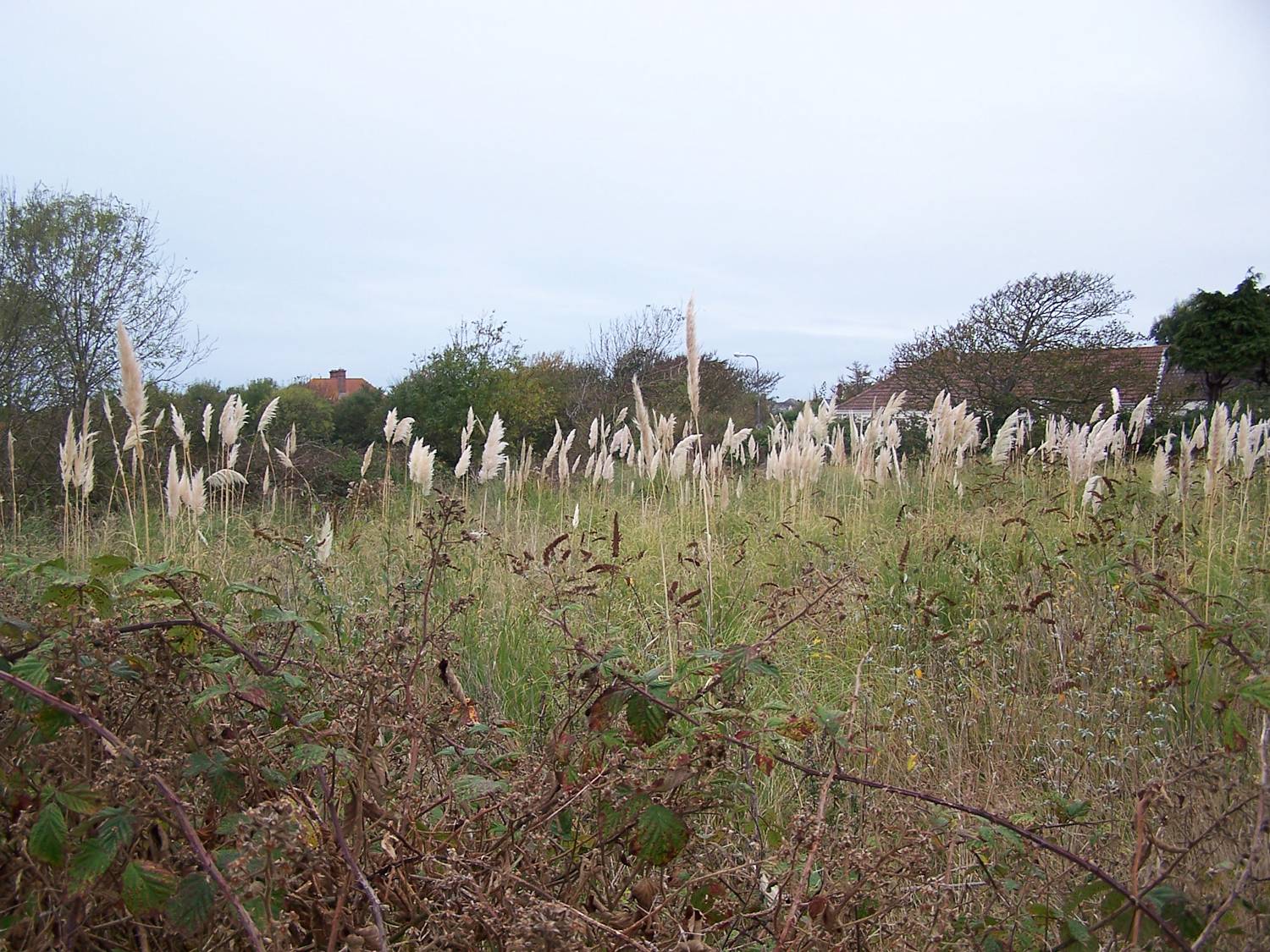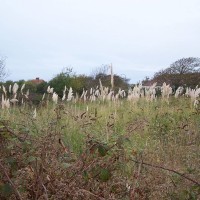
Pampas Grass - Cortaderia selloana
Expand and collapse the sections below by clicking on the title or + / - icons.
Short description of Cortaderia selloana, Pampas Grass
A large (up to 4m tall) tussock forming perennial grass. Its leaves are long with serrated edges. The large, decorative, flower heads are silvery white and produces a silky hairy mass at fruiting.
Impact summary: Cortaderia selloana, Pampas Grass
This aggressive grass can out-compete native floras, reduce biodiversity at sites and alters habitats and communities. It has the potential to fuel wildfires, block access and damage drainage channels.
Habitat summary: Cortaderia selloana, Pampas Grass
In its native distribution a species of rocky gullies, riverbanks and roadsides. It can tolerate a range of environmental conditions but prefers sandy, low pH soils.
Overview table
| Environment | Terrestrial |
|---|---|
| Species status | Non-Native |
| Native range | Uruguay, Brazil Southern Large, Argentina, Chile |
| Functional type | Land plant |
| Status in England | Non-Native |
| Status in Scotland | Non-Native |
| Status in Wales | Non-Native |
| Location of first record | v.c.113 (Jersey) |
| Date of first record | 1925 |
Origin
Native to South America – Brazil, Argentina, Chile, Uruguay.
First Record
Cultivated in GB since 1848 and first recorded wild in 1925.
Pathway and Method
Introduced by man as an ornamental garden plant and is commonly grown in gardens and parks. It has since escaped into the wild via inappropriate dumping of garden waste and also via deliberate plantings. Recently plants have started to produce seed which have naturally dispersed into the wild.
Species Status
Most plants grown in GB gardens are female, as these have the decorative seed heads. As a result there has been little seed produced from either garden or wild established plants. However in recent years seedlings have been observed in the wild. It is presumed that this has started to occur as the result of Pampas grass being grown from imported seed so that both female and bisexual plants are now equally available. As a result this species is now starting to set seed freely.
Is known to be a serious invasive alien along the Pacific coast of USA, Hawaii and Australasia. It has also become established in South Africa, southern Europe and Macronesia.
Dispersal Mechanisms
Its lightweight seed is readily wind dispersed for up to 20 miles.
Reproduction
This species is gynodioecious i.e. having plants that are either female or male and female. Bisexual plants are, however, functionally male making the species practically dioecious. Plants are wind pollinated.
Known Predators/Herbivores
Cattle are known to graze it.
Resistant Stages
Seeds from female plants are considered to be persistent.
Habitat Occupied in GB
A species of road verges, railway banks, rubbish dumps and also grasslands on sea-cliffs and sand dunes.
Mainly a species of south and south-west England, with scattered localities elsewhere in England, Scotland and Wales, with a slight bias to coastal regions.
Environmental Impact
Outcompetes native floras and alters habitats.
Health and Social Impact
The serrated edged leaves can cause minor cuts and the pollen may induce hayfever. Used as an ornamental garden plant, in erosion control, as wind break planting and as animal fodder.
Economic Impact
Is considered a fire hazard, can block access routes, can damages grazing land and cause visibility hazards on roads.
Identification
Stace, C.A. (2010) New flora of the British Isles, Third Edition, Cambridge University Press, Cambridge.
Biology, ecology, spread, vectors
Preston, C.D., Pearman, D.A. & Dines, T.D. (2002) New Atlas of the British and Irish Flora. Oxford University Press.
Cope, T. and Gray, A. (2009) Grasses of the British Isles: BSBI handbook No.13. Botanical Society of the British Isles, London.
Management and impact
DAISIE website
http://www.europe-aliens.org/speciesFactsheet.do?speciesId=3364#
Impact assessment - Pampas Grass (Cortaderia selloana) in Victoria - Victoria Resources On-Line
http://www.dpi.vic.gov.au/dpi/vro/vrosite.nsf/pages/impact_pampas_grass
General
On Line Atlas of the British and Irish Flora - online resource available at
http://www.brc.ac.uk/plantatlas/index.php?q=plant/cortaderia-selloana
ISSG database – see references within
http://www.issg.org/database/species/ecology.asp?si=373&fr=1&sts=&lang=EN
Fox, L. (2010) KIA‘I MOKU: Pampas grass is an invasive, prolific plant. The Maui News
http://www.mauinews.com/page/content.detail/id/540316/KIA-I-MOKU--Pampas-grass-is-an-invasive--prolific-plant.html?nav=15
Mannes, T. (2009) Campaign launched against pampas grass. The San Deigo Union Tribune.
http://www.signonsandiego.com/news/2009/may/03/1mc3pampas233036-campaign-launched-against-pampas-/
Spotted this species?
Distribution map
View the Distribution map for Pampas Grass, Cortaderia selloana from BSBI

Native range map
View an interactive native range map for Pampas Grass, Cortaderia selloana
Risk assessment
Risk assessment for Cortaderia selloana. See a full list of non-native species Risk assessments.


